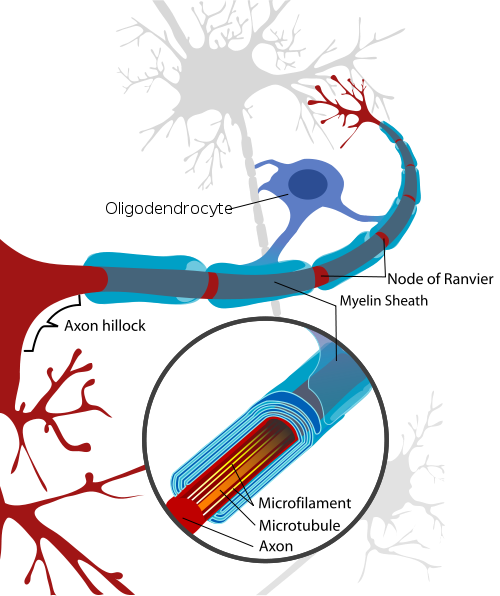Exploring the Genetic Links Between Aging, Myelin, and Alzheimer's
Written on
Chapter 1: Understanding Brain Aging
The human brain, much like the rest of our body, undergoes aging processes that can affect its functionality. Even in the absence of dementia, brain shrinkage, stroke vulnerability, and the formation of lesions can occur. Genetic activity may decline, leading to a decrease in fluid intelligence, and certain types of memory and learning may suffer. Interestingly, creativity appears to be somewhat more resilient against the effects of aging.
Despite these general trends, some individuals, referred to as cognitive superagers, maintain robust cognitive abilities well into their later years. Studies indicate that their brains exhibit unique characteristics compared to the general population. While lifestyle choices play a significant role in healthy cognitive aging, genetics undoubtedly contribute as well. The challenge lies in identifying which genetic factors to prioritize, as genetics is a multifaceted field that is rarely straightforward.
To explore the genetic factors associated with cognitive aging, researchers typically follow a systematic approach:
- Identify human genetic variations linked to cognitive aging, often utilizing genome-wide association studies (GWAS) that analyze single-nucleotide polymorphisms (SNPs) across diverse populations.
- Once relevant SNPs are identified, scientists examine the associated genes and employ gene-set enrichment analysis (GSEA) to uncover biological pathways that may be linked to aging.
- If certain pathways appear noteworthy, researchers investigate the proteins encoded by these genes to determine their roles within the biological framework.
- Finally, experimental validation is conducted using tissue samples, cell cultures, or animal models, with observational studies in humans providing additional evidence where applicable.
Let’s delve into a recent study that implements these steps and uncovers valuable insights about aging brains.
In the video, "Realistic Strategies for Preventing Dementia," Dr. Frank Longo discusses practical approaches to maintain cognitive health and prevent dementia.
Microglia and Myelin
The study begins with a GWAS conducted on data from the International Genomics of Alzheimer’s Projects (IGAP), which encompasses 21,982 Alzheimer’s disease (AD) cases and 41,944 cognitively normal controls. The researchers also included GWAS data from three additional datasets focusing on aging and longevity beyond Alzheimer’s.
The outcome? A plethora of SNPs linked to various genes—genetics is indeed complex! Notably, two genes stood out: APOE, a well-known gene associated with Alzheimer’s, and APOC1, primarily expressed in the liver and involved in immune responses and cholesterol metabolism, which has links to longevity, although its exact role remains unclear.
Next, the team explored the brains of mice to understand the pathways and cell types associated with these genetic variants. Through a method known as weighted gene co-expression analysis, the researchers identified eight "co-expression modules," two of which were significantly enriched with genes related to microglia and oligodendrocytes—where microglia act as the brain's immune cells and oligodendrocytes provide support.
Data from humans indicated that the co-expression module most strongly correlated with age was rich in microglial genes. The researchers also discovered that genetic variations associated with AD were prevalent in both microglial and oligodendrocytic gene networks, which showed increased expression with aging in the human hippocampus, contrasting with synaptic networks that declined.
In essence, the genetic underpinnings of brain aging and AD are interconnected.
Combining human and mouse data revealed that the microglial module was linked to innate immune functions, while the oligodendrocytic module was associated with myelination. Myelin, a fatty layer enveloping neuronal axons, undergoes significant changes with age, potentially exposing neurons to damage and hindering signal transmission. Individuals carrying the Alzheimer-associated APOE4 gene variant are more likely to experience reduced myelin production as they age, a finding corroborated by this study.

Furthermore, several genes linked to the "microglial hub" were also active in other cell types, particularly oligodendrocytes. This interaction may suggest that age-related signals from oligodendrocytes could lead to microglial dysfunction.
Putting the pieces together, gene variants associated with longevity in humans also correlate with neurodegenerative diseases like Alzheimer’s. Many of these genes are expressed in microglia and oligodendrocytes, influencing the brain’s immune response and the myelination process. Given that the genes expressed by oligodendrocytes may induce microglial issues, it is plausible that age-related demyelination disrupts microglial homeostasis, contributing to neurodegeneration. This highlights the importance of maintaining healthy myelin as a potential key to promoting cognitive health in aging.
The authors conclude that this research offers new insights into the cellular mechanisms linked to brain aging and their potential role in resilience against aging or Alzheimer’s risk. Their findings may pave the way for developing markers that indicate the physiological age and pre-pathological states of the brain, as well as new targets for therapeutic interventions.
In the second video, "Dr. Rhonda Patrick: Micronutrients for Health & Longevity," she discusses the vital role of micronutrients in promoting health and extending lifespan.